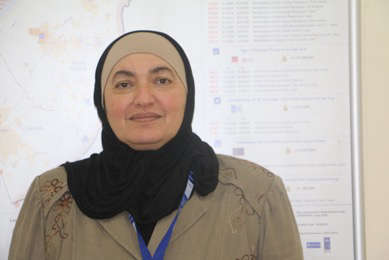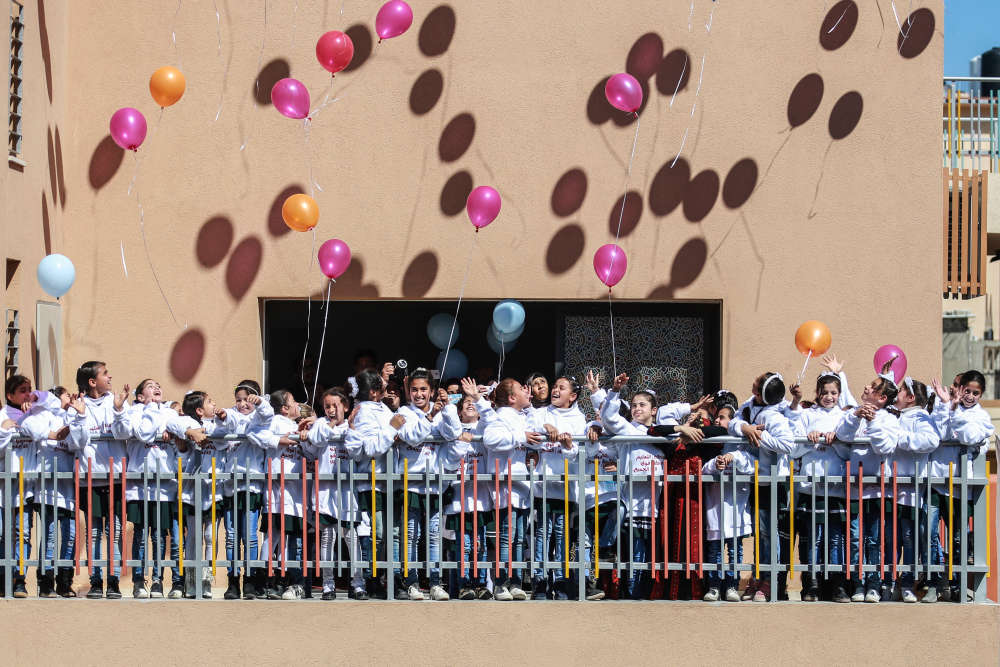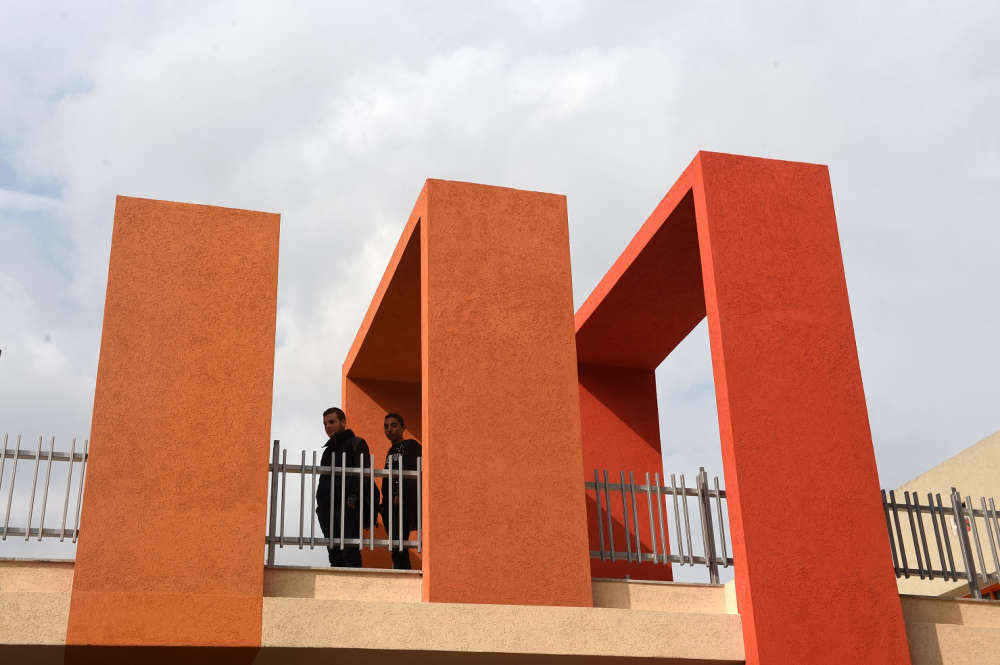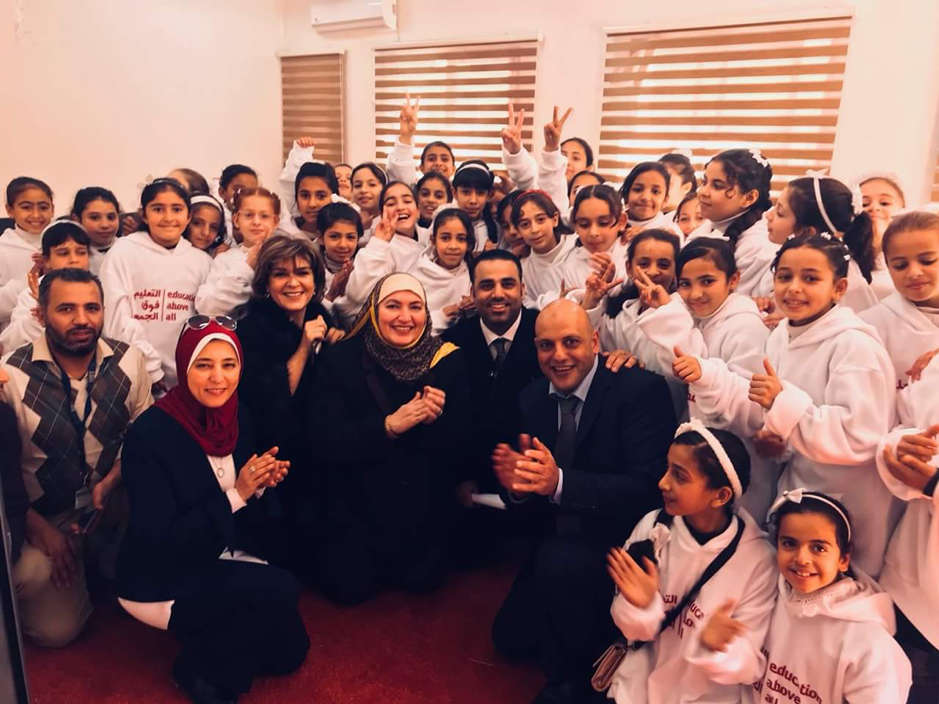With electricity cuts of up to 20 hours per day, energy remains an issue to overcome in the Gaza Strip, especially within the education and health sectors. The limited electricity supply is severely disrupting the functioning of intensive care units, operating theatres and other critical health care facilities. The long blackout hours have affected the achievement levels of students; some are unable to see what is written on the board, others cannot use a computer lab or electronic devices.
Due to damages of existing infrastructure – during periods of military incursion – as well as needed rehabilitation of sub-standard facilities, there is an urgent need for improvements in educational facilities in order that students could get back to their schools and follow their dreams of a better future for them and their families. Therefore, UNDP’s focus has been to create a learning environment that both fosters quality education and responds to the challenges that result from the power crisis. In partnership with the Qatar Fund for Development, Al Fakhoora – a programme of Education Above All Foundation (EAA), and the Palestinian Ministry of Education – UNDP thus embarked on efforts to rebuild Gaza’s educational facilities.
With a budget of just over US$21 million, funded by Qatar Fund for Development through Al Fakhoora, the Right to Education Programme was launched to reconstruct and rehabilitate educational facilities. Over 98,994 students have regained access to quality education through this programme that has targeted 51 educational institutions and engaged in the rebuilding of totally damaged schools and the rehabilitation of partially damaged schools, universities, and vocational training centers.i
The endeavor was no ordinary reconstruction process for UNDP. The modality of Building Back Better was utilized in order to ensure that students could enjoy a better learning environment – a crucial undertaking in an area with limited child-friendly spaces. Moreover, the school was not designed behind closed doors. The community and school children were invited to participate in the discussion and share their ideas. Innovative approaches were incorporated that facilitate the transformation of multi-purpose halls into emergency shelters during times of crisis; sustainable green energy sources (PV cells) were installed to address the electricity cuts, as were sustainable water and sanitation facilities.
Thus, the first Palestinian child-friendly school – Jamal Abdel Nasser – was built in the Gaza Strip, setting a new standard in education with a child-centered learning environment and eco-sustainable infrastructure and renewable energy. The school is equipped with solar energy systems to cover the electricity load and operate the computer labs and laboratory. A total of 141 solar panels generate approximately 45 kilowatts to make sure that students have electricity in their classrooms. The windows are wide to allow for better ventilation and natural light to come in, glass doors collect and focus sunlight into the classroom, and double walls ensure a cool environment in the summer and warmth in winter. In an unprecedented move, modern designed rooftops were used as social spaces. A green oasis was added on the rooftop to allow for space where students and teachers can enjoy their recess as they eat and socialize.
Opened on February 28, 2018, the Jamal Abdel Nasser School welcomed 752 students from grades 10 to 12. During the next semester, 900 students are expected to study in the school’s 24 classrooms. This tremendous effort and collaboration between UNDP, Qatar Fund for Development and the Palestinian Ministry of Education is merely the start of building Gaza’s child-friendly schools, which enable children to enjoy their studies, feel safe, and grow up with hope for a better future.
A separate building on the grounds of the school was turned into a library. This quiet and comfortable reading environment has two floors and a total area of 220 m2. Students can use this space to read and study on their own time. More importantly, they can feel that they are part of a community. Many schools in Gaza are not equipped with computer and science labs or sports facilities. Jamal Abdel Nasser is different. The library offers ample space for students to read, and a solar energy system guarantees the continuous operation of the computer and science labs. Furthermore, a multi-function hall was built to allow students to practice their favorite sport in a closed and well-designed environment.
Child-friendly schools should be accessible and designed for ease of movement. Bridges connect all the school’s buildings, ramps ensure accessibility for mobility-impaired students, and a special entrance was created for the local community. The school also has an amphitheater for student gatherings, breakout areas for recreation, and outdoor playgrounds.
Imagine that these children have the chance to experience what it means to have a school with enough space in which to play and study – a school that they co-designed to be child-friendly and more colorful and welcoming. What a moment of inspiration!
Empowerment through education is one component of the Sustainable Development Goals which we aim to reach by 2030. This innovative approach is another building block in our efforts to strengthen the resilience of the population and give UNDP and its partners the tools needed to help more children in Gaza go to school, complete their education, and transform their lives and communities.
Editing and proofreading of the article text was carried out by UNDP.
i UNDP’s Right to Education Programme engages in the reconstruction and rehabilitation of educational facilities and in efforts to increase the capacity for mental health care in Gaza; it furthermore aims to restore the hope of youth for increased prospects of employment through e-work. For more information, please visit http://www.ps.undp.org/content/papp/en/home/operations/projects/crisis_prevention_and_recovery/right-to-education-in-gaza.html.





